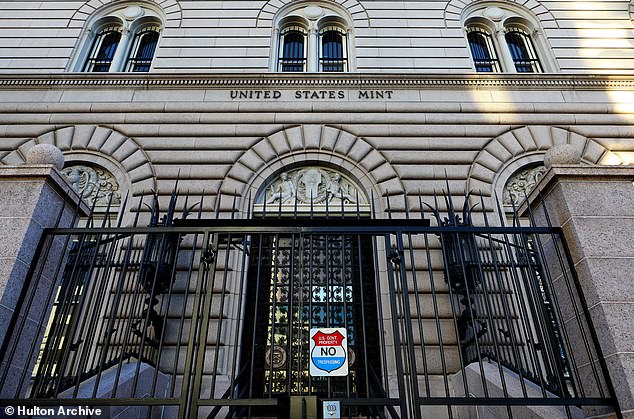The American penny passed away on Wednesday in Philadelphia at the age of 232.
According to the Treasury Department, the causes were irrelevance and high cost.
No longer could a penny buy anything — not even penny candy. And with the expense of minting each coin exceeding three cents, the penny’s fate was sealed by simple economics.
The final pennies were minted on Wednesday afternoon in the Pennsylvania city, where treasurer of the United States Brandon Beach struck the final, circulating one-cent coin.
‘Today the Mint celebrates 232 years of penny manufacturing,’ said Kristie McNally, acting mint director.
‘While general production concludes today, the penny’s legacy lives on. As its usage in commerce continues to evolve, its significance in America’s story will endure.’
The penny has played an important roles in daily American life for a very long time —from the earliest days of the US economy up until now.
However, due to current consumer behavior and economic factors, continued production of the penny is unsustainable.

The American penny passed away on Wednesday in Philadelphia at the age of 232
Over the past decade, the cost of producing each penny has risen from 1.42 cents to 3.69 cents per penny.
There are still an estimated 300 billion pennies in circulation — far exceeding the amount needed for commerce.
Retailers and other businesses can continue to price goods and services in one-cent increments.
The decision to halt production of the penny came in May, when the US government announced its decision to kill the coin once and for all.
The penny was costing more than four times its value to make and the Treasury lost $85 million minting the coins last year alone.
The phasing out of the penny may save the Treasury some immediate cash, but it raises the next currency problem, that of the nickel.
‘If you get rid of the penny, it will increase the amount of nickels,’ Rhett Jeppson, a former chief executive of the US Mint said.
‘You lose more on a nickel than you do on a penny,’ Jeppson told the New York Times.

The mint will stop circulating new pennies next year, according to reports

The production of nickels is also a loss-maker for the Treasury
Nickels, worth five cents, are also a loss-maker for the treasury, leaving an $18 million hole from their production last year.
The problem could be exacerbated by the end of the penny because demand for nickels is likely to shoot up in their place.
The US penny was first introduced in 1973, beginning as a large copper coin and eventually shrinking in size to its modern, smaller form.
Early designs featured a ‘flowing hair’ Liberty, which was quickly updated, and the coin itself has changed composition and appearance, notably featuring Abraham Lincoln since 1909.
